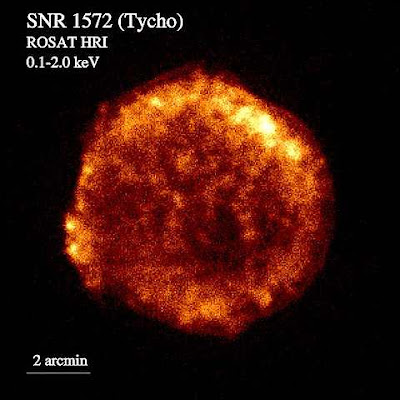
This X-ray image provided by NASA, and captured by the German ROSAT satellite in the 1990s, shows the remnant of a supernova that was observed in 1572 by Danish astronomer Tycho Brahe. A new study explores the nature of that star explosion

This composite image provided by NASA Wednesday Dec. 3, 2008 of the Tycho supernova remnant combines infrared and X-ray observations obtained with NASA's Spitzer and Chandra space observatories, respectively, and the Calar Alto observatory, in Spain. The image shows the remnant of a supernova that was observed in 1572 by Danish astronomer Tycho Brahe. The explosion has left a blazing hot cloud of expanding debris (green and yellow). The location of the blast's outer shock wave can be seen as a blue sphere of ultra-energetic electrons. Newly synthesized dust in the ejected material and heated pre-existing dust from the area around the supernova radiate at infrared wavelengths of 24 microns (red). Foreground and background stars in the image are white.










No comments:
Post a Comment